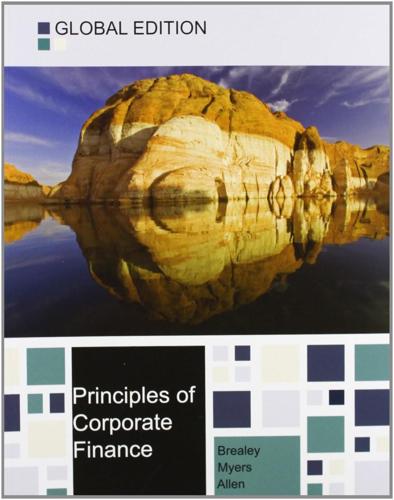
Principles of Corporate Finance
by
Richard A. Brealey
,
Stewart C. Myers
and
Franklin Allen
Published 15 Feb 2014
A Common Mistake You sometimes hear people say that because distant cash flows are riskier, they should be discounted at a higher rate than earlier cash flows. That is quite wrong: We have just seen that using the same risk-adjusted discount rate for each year’s cash flow implies a larger deduction for risk from the later cash flows. The reason is that the discount rate compensates for the risk borne per period. The more distant the cash flows, the greater the number of periods and the larger the total risk adjustment. When You Cannot Use a Single Risk-Adjusted Discount Rate for Long-Lived Assets Sometimes you will encounter problems where the use of a single risk-adjusted discount rate will get you into trouble. For example, later in the book we look at how options are valued.
…
Then interest rate parity theory tells us that the one-year forward exchange rate is Similarly, the two-year forward rate is So, if Roche hedges its cash flows against exchange rate risk, the number of Swiss francs it will receive in each year is equal to the dollar cash flow times the forward rate of exchange: These cash flows are in Swiss francs and therefore they need to be discounted at the risk-adjusted Swiss franc discount rate. Since the Swiss rate of interest is lower than the dollar rate, the risk-adjusted discount rate must also be correspondingly lower. The formula for converting from the required dollar return to the required Swiss franc return is19 In our example, Thus the risk-adjusted discount rate in dollars is 12%, but the discount rate in Swiss francs is only 9.9%. All that remains is to discount the Swiss franc cash flows at the 9.9% risk-adjusted discount rate: Everything checks. We obtain exactly the same net present value by (a) ignoring currency risk and discounting Roche’s dollar cash flows at the dollar cost of capital and (b) calculating the cash flows in francs on the assumption that Roche hedges the currency risk and then discounting these Swiss franc cash flows at the franc cost of capital.
…
8-3 Validity and Role of the Capital Asset Pricing Model Tests of the Capital Asset Pricing Model/Assumptions behind the Capital Asset Pricing Model 8-4 Some Alternative Theories Arbitrage Pricing Theory/A Comparison of the Capital Asset Pricing Model and Arbitrage Pricing Theory/The Three-Factor Model Summary Further Reading Problem Sets Finance on the Web Mini-Case: John and Marsha on Portfolio Selection 9 Risk and the Cost of Capital 9-1 Company and Project Costs of Capital Perfect Pitch and the Cost of Capital/Debt and the Company Cost of Capital 9-2 Measuring the Cost of Equity Estimating Beta/The Expected Return on Union Pacific Corporation’s Common Stock/Union Pacific’s After-Tax Weighted-Average Cost of Capital/Union Pacific’s Asset Beta 9-3 Analyzing Project Risk What Determines Asset Betas?/Don’t Be Fooled by Diversifiable Risk/Avoid Fudge Factors in Discount Rates/Discount Rates for International Projects 9-4 Certainty Equivalents—Another Way to Adjust for Risk Valuation by Certainty Equivalents/When to Use a Single Risk-Adjusted Discount Rate for Long-Lived Assets/A Common Mistake/When You Cannot Use a Single Risk-Adjusted Discount Rate for Long-Lived Assets Summary Further Reading Problem Sets Finance on the Web Mini-Case: The Jones Family, Incorporated Part Three: Best Practices in Capital Budgeting 10 Project Analysis 10-1 The Capital Investment Process Project Authorizations—and the Problem of Biased Forecasts/Postaudits 10-2 Sensitivity Analysis Value of Information/Limits to Sensitivity Analysis/Scenario Analysis/Break-Even Analysis/Operating Leverage and the Break-Even Point 10-3 Monte Carlo Simulation Simulating the Electric Scooter Project 10-4 Real Options and Decision Trees The Option to Expand/The Option to Abandon/Production Options/Timing Options/More on Decision Trees/Pro and Con Decision Trees Summary Further Reading Problem Sets Mini-Case: Waldo County 11 Investment, Strategy, and Economic Rents 11-1 Look First to Market Values The Mercedes and the Movie Star 11-2 Economic Rents and Competitive Advantage 11-3 Marvin Enterprises Decides to Exploit a New Technology—an Example Forecasting Prices of Gargle Blasters/The Value of Marvin’s New Expansion/Alternative Expansion Plans/The Value of Marvin Stock/The Lessons of Marvin Enterprises Summary Further Reading Problem Sets Mini-Case: Ecsy-Cola 12 Agency Problems, Compensation, and Performance Measurement 12-1 Incentives and Compensation Agency Problems in Capital Budgeting/Agency Problems and Risk Taking/Monitoring/Management Compensation/Incentive Compensation/Monitoring Pay for Performance 12-2 Measuring and Rewarding Performance: Residual Income and EVA Pros and Cons of EVA 12-3 Biases in Accounting Measures of Performance Example: Measuring the Profitability of the Nodhead Supermarket/Measuring Economic Profitability/Do the Biases Wash Out in the Long Run?
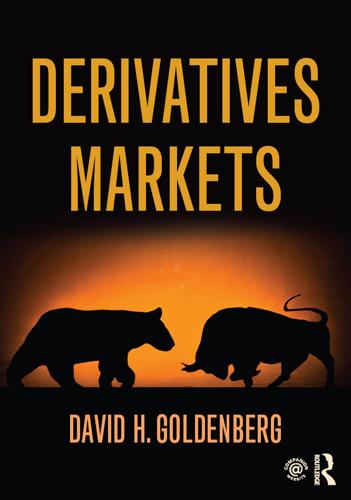
Derivatives Markets
by
David Goldenberg
Published 2 Mar 2016
Next, we turn to the much harder problem of valuing them today. In order to accomplish this, we need a pricing technique since it is not at all obvious how to price derivative securities. We could use a very sophisticated version of the workhorse of basic finance, present value (PV). That procedure involves trying to find a risk-adjusted discount rate (RADR) to be used to discount the security’s risky expected cash flows, and knowing the relevant probabilities. However, in practice, this could turn out to be very difficult because the data required to carry out this procedure is difficult to acquire. Fortunately, there is a much easier procedure.
…
4.3 HOW DIVIDEND PAYMENTS AFFECT STOCK PRICES Next, we want to more carefully consider the question of how dividend payments affect stock prices. You have undoubtedly learned that stock prices are the present values of the payouts generated by owning the stock, discounted at an appropriate risk-adjusted discount rate (RADR). The only direct cash payouts that common stocks pay are common dividends. Capital gains appear in the form of increased stock prices, and are not direct payouts like dividends. Stock dividends are payable in stock, not cash. What happens to the stock price after the dividend is paid at time t?
…
Let’s explore this potential avenue to pricing options. The standard discounted cash flow (DCF) approach has two steps, Step 1 Calculate the expected value of the option’s payoffs using the actual probabilities p and 1–p of up and down moves respectively in the Binomial process. Step 2 Discount the result of Step 1 by an appropriate risk-adjusted discount rate (RADR). Note that, in order to accomplish this, one needs the option’s risk premium, since an option is a risky asset. Note that, even if we could do Steps 1 and 2, we would still have to show that the resulting option price is arbitrage-free. We are looking for the arbitrage-free option price, not simply a number which is the result of a financial discounting technique.
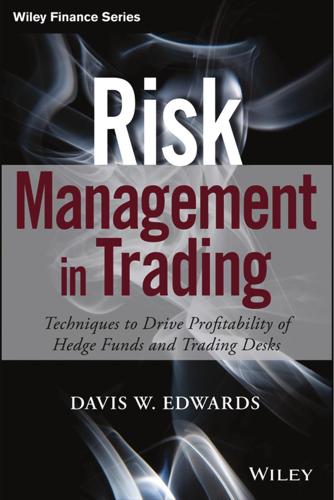
Risk Management in Trading
by
Davis Edwards
Published 10 Jul 2014
It is possible to calculate the survival assumption embedded in the market prices of bonds and credit default swaps assuming that the risk of default is the only reason that a corporate bond will sell for less than a similar risk‐free bond. The logic behind this assumption is that a rational investor should be indifferent between the two investments as long as the present value of the cash flow incorporates the possibility of loss. This leads to the relationship between risk adjusted discount rates and risk‐free rates. (See Equation 9.5, CDS‐Based Default Probability.) A Credit Default Swap (CDS) is a financial derivative where the issuer of the swap will compensate the CDS buyer in the event of a default. PD = (1 − CDSSpread) / LGD (9.5) where PD CDS Spread LGD Probability of Default CDS Spread.
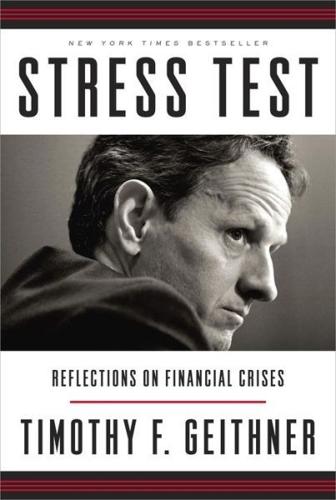
Stress Test: Reflections on Financial Crises
by
Timothy F. Geithner
Published 11 May 2014
Reflects net realized gain/income of $765 million of accrued interest and $1.5 billion mark-to-market value of remaining assets in Maiden Lane LLC. Source: November 2013 Quarterly Report on Federal Reserve Balance Sheet Developments. U.S. Treasury Department TARP Bank, Credit and Auto Programs. Estimates of the impact of TARP programs and investments on the Federal budget. Includes financing costs and a market risk-adjusted discount rate. Includes Treasury portion of $425 million termination fee from Bank of America that was apportioned between the Treasury, Federal Reserve, and FDIC, and proceeds from Citigroup TruPS provided in consideration for ring fence. Source: Treasury Department, “The Financial Crisis Five Years Later,” TARP Monthly 105(a) Report to Congress.
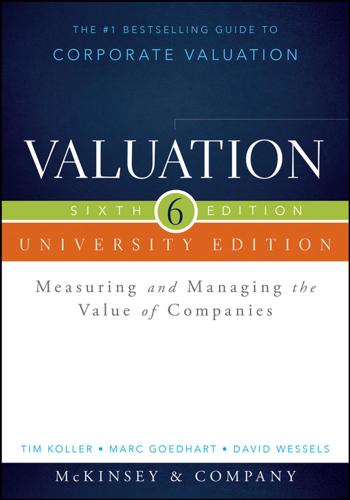
Valuation: Measuring and Managing the Value of Companies
by
Tim Koller
,
McKinsey
,
Company Inc.
,
Marc Goedhart
,
David Wessels
,
Barbara Schwimmer
and
Franziska Manoury
Published 16 Aug 2015
If (most of) the risk driving the contingent cash flows is fully diversifiable, you need no special modeling and can use DTA, discounting investment cash flows at the risk-free rate and the underlying project’s cash flows at the weighted average cost of capital, as in the pharmaceutical example in the next section. If the risk is (mostly) nondiversifiable and priced in the market, the appropriate risk-adjusted discount rate for the project’s cash flows is no longer the weighted average cost of capital used in EXHIBIT 35.10 Four-Step Process for Valuing Flexibility Estimate NPV without flexibility Model uncertainty in event tree Objectives Compute base-case present value without flexibility. Understand how present value develops with respect to changing uncertainty.

Stigum's Money Market, 4E
by
Marcia Stigum
and
Anthony Crescenzi
Published 9 Feb 2007
We would be able to construct an arbitrage, by buying the call and selling the synthetic call constructed with 0.148 shares and −$10.16 bonds (see Table 17.4). This is an arbitrage: you receive $0.16 today and have no liability tomorrow—regardless of the stock price. You may be surprised to see no mention of the probabilities of the up and down states, nor any mention of risk-aversion or a risk-adjusted discount rate in the above pricing. Probabilities do not matter because the arbitrage holds regardless of the probabilities, since you have no future liability regardless of the stock price. How does this square with the intuition that a call will obviously be more valuable if the “up” state is TABLE 17.4 Arbitrage of an underpriced call more likely?